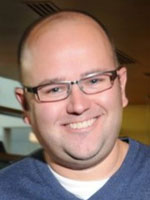Who Cares? Newsletter Archives
Who Cares? A Newsletter for Caring Pastors and Educators was published during 2011 and 2012 by Claude E. Steen, III.

Who Cares? A Newsletter for Caring Pastors and Educators — Vol. 1/No. 1 — January 2011
Editor’s Perspective
“…Was Blind, But Now I See”
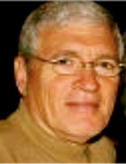
You’re looking at the first issue of an e-mail newsletter designed to highlight a conversation among Adventist pastors and educators about how to deal more constructively and compassionately with our gay and lesbian constituents.
Like me, some of you may not have realized that we have any, because they aren’t wearing labels or demanding our attention. But more and more our eyes are being opened and our hearts are being wrenched by nagging questions about how to act as Jesus would in the face of deep but quiet anguish.
Whose anguish? That of members in our pews and students in our schools who deeply identify as Adventists, but who are sure that their other, equally deep, identity as gay or lesbian can never be welcomed by their church.
Briefly, here's my story. This past June I retired after more than 40 years of pastoral ministry, mostly in the NAD Columbia and Southern Unions, with five years in Ethiopia, where I had grown up as an MK. My wife Donna and I are the proud parents of five adult children, all outstanding achievers with solid careers and great families, giving us 11 grandchildren (to date!).
So why would I want to dedicate a portion of my retirement to editing a newsletter about gays? Because I have come to realize that for most of those wonderful years of marriage and ministry I was blind. Blind to some pressing needs of my parishioners. And blind even to agonizing struggles going on in my own children.
First came the news that one of our daughters-in-law (an Adventist professional from a good Adventist family, a great mother of two of our wonderful grandchildren) was leaving her marriage, having decided she is a lesbian. Then just over a year ago, another son (in medical school, still single at 31, a "son with whom I am well pleased") called to tell his mother and me that he is gay.
Obviously all this has raised many urgent questions in my mind—some deeply personal, others more general and professional. Why couldn't a son struggling for years with his sexual orientation confide in his pastor father or his educator mother? Why in all my years of pastoring Adventist churches was I never aware of even one gay or lesbian member or attendee? The best statistics available suggest that as many as 5% of church family members and potential members are homosexual or struggling to deal with those issues in their personal lives.
I've come to realize that it wasn't because they weren't there that I didn't see these people, but because I was blind. They didn't make themselves known because my churches, and the attitudes I projected, were not "safe" for such discussions or disclosures. And I now know that my experience is not all that unique.
This is not an easy subject to tackle. Most of us have strong convictions and maybe even stronger feelings. But we must not avoid study and discussion just because it is hard. The love that our Lord demands (and provides) cannot look the other way while significant numbers of our neighbors, our members, our students, and our families feel that we condemn the very beings they know themselves to be.
When Jesus lays out the criteria by which he will judge our faithfulness and effectiveness in ministry, He commends those who ministered tenderly to His brothers and sisters considered outcasts or less valuable, not realizing they were ministering to Jesus Himself. Those who failed the test are those who neglected the most vulnerable of His children (Matthew 25:31-46).
Who Cares? proposes to be a voice calling Adventist leaders to care enough to take another look, to take seriously the divine scolding of Ezekiel 34 directed at shepherds who neglect to care for the weak and the abused of the flock, and to help transform our churches and schools into safe places for all of God’s children. We don’t pretend to have all the answers, but we invite you to join the conversation searching for them. We point no fingers for we are all guilty. And in the words of Jesus, “…they know not what they do.” But the Chief Shepherd is already at work, and we are invited to repent and join Him.
Claude E. Steen, III
Diversity and the Seventh-day Adventist Church
By Reinder Bruinsma
Editor's note: The unity of the Adventist church seems to be threatened by post-modernism and increasing diversities of thought and culture. This article addresses such relevant questions as, “How should the church deal with diversity?”, “If unity in diversity is to be achieved how do we decide which beliefs are non-negotiable and which allow flexibility?”, and “What are the most pressing issues to be decided by the church in the next five years?”
This is a partial transcript of a sermon presented by Pastor Bruinsma at the European Kinship Meeting this past September in the village of Neer, southeastern Netherlands. It is considerably longer than most we intend to send you, but we believe that the importance and timeliness of these ideas merit the energy it will cost you to digest them.
In order to understand some of the issues facing our church around concepts of diversity, I believe it is important for us to take a look at the difference between modern and postmodern thinking. The era we term modern rejected medieval myths, renewed an interest in the classics, embraced humanism, developed a new approach to the arts, and promoted trust in reason. The scientific method espoused experiment and exploration.
The role of theology and church weakened as the emphasis on reason grew. The motto became, “I believe what I can understand.” Charles Darwin (1809-1892) wrote that science rather than religion explains our origins. Gradually secularism gained ground. There was an emphasis on harmony and structure. With the thoughts of Friedrich Schleiermacher and Friedrich Nietzsche there began to be more focus on feeling, interpretation, lack of absolute truth and morality, and emphasis on hermeneutics. We began to think in terms of chance or contingencies instead of absolute truths. Diversity rather than harmony or unity became increasingly important. Believers began to ask questions not posed before: Why Christianity? Why this particular denomination? How much must I accept to belong to a church?
The appeal of non-denominational churches increased. Post-modern thinkers began to have changing views of ecumenism. We began to consider the possibilities that all traditions have value; and our goals began to focus on dialogue, understanding and respect.
Diversity: A Christian Value
There is one God. Deuteronomy 6:4 proclaims, “Hear, O Israel! The Lord is our God, the Lord alone!” Exodus 20 instructs, “Do not worship any other gods besides Me!” Ephesians 4:5 reiterates, “There is only one Lord, one faith, one baptism.” God is unity. And yet, God is also a trinity—One Essence in three “Persons”—community, communication, relationships. The Bible shows us repeatedly that it takes a multiplicity of metaphors to talk about God.
The Biblical view of mortals is holistic: We are unity. We have a body and a spirit that makes us a soul. We have individuality. Yet, we are diversity: male, female, intersex. We exist in a family, community and relationships. We have a variety of occupations: farmer, prophet, teacher and healer.
The Bible is a book of diversity; yet, there is unity in the Scriptures. There is great diversity among the authors and their styles of writing. There is diversity in sources and discrepancies in the reporting of specific events.
In the Old Testament there is both unity and diversity in the origin stories of Genesis 1, 2, and 10. In the stories of Israel and other nations there was no intention that other nations should cease to exist. God's intention was that these different nations should worship the one God. The covenant emphasizes kinship, but there is always a place for the stranger. Jesus' genealogy indicates non-Israelite women.
In the New Testament Jesus associated with men and women of all walks of life. He had compassionate dealings with Jews and non-Jews: Samaritans, the Syrophoenician woman, and Romans, for examples. He dealt with various categories of Jews. His followers interacted with a diverse group of people: Philip and the eunuch from Africa, Peter and the Roman centurion, Paul as apostle to the Gentiles. Christians were from everywhere and made up of both Jews and Gentiles. Some member of the new church thought that everyone should be the same; but the focus of Paul on diversity prevailed: we are one body with One Head, yet we differ from each other and are needed and interdependent. We have different gifts and talents but One Spirit. It is not what we are but in Whom we are.
Development of the Seventh-day Adventist Church
We have changed from being white and rural to mixed race and cosmopolitan. We began in the United States, expanded to Europe, and became world-wide. In many countries we have gone from mono-cultural to multicultural. We have shifted from being a denomination predominately from lower social classes to one containing a wide spread of social strata. We look at issues such as the role of the church community, the extended family (social control), and the place of church in the totality of life. Different times and parts of the church have had a variety of views on divorce, condoms and other contraceptives, polygamy, sex before marriage, cohabitation and homosexuality.
Schools of thought around these discussions include liberal, progressive, moral influence, evangelical, center conservative, extreme conservative and ultra-extreme conservative (outside regular Adventism).
How do we decide what is more or less important? Do we use some sort of doctrinal triage? What are the landmarks of our faith? I propose a model of concentric circles. There are Christian fundamentals (what makes you a Christian). Then there would be Adventist core doctrines (which defines an Adventist). Then Adventist secondary doctrines (fair degree of unanimity) and finally Adventist traditions. The postmodern person will make personal judgments.
Key issues at the present time are: how to read the Bible, hermeneutics, creation, women's ordination and sexual orientation.
As the church struggles with how to address issues of diversity I have many reasons for optimism. We share many basic convictions: a high view of the Bible; basic Christian doctrines such as God, Christ and salvation; a general Protestant orientation; Sabbath; the second coming; a great controversy theme; belief in a heavenly sanctuary; an understanding of the nature of humanity and an emphasis on stewardship, especially health.
How Will We Deal With Polarity and Diversity? Looking Forward
Will we maintain unity through forced uniformity or through unity in diversity? Some positive signs are: the “grand story” still works much of the time; we still utilize Ellen White; we have a strong organizational structure from the local church to the General Conference; there is frequent travel between various parts of the church; we are able to organize large multicultural meetings; we have strong publications such as Adventist World, mission stories, and the Hope Channel; and we have many common goals.
However, we need to look at how modern and postmodern thinkers will communicate and understand each other. We need to address theological polarization, and we need to develop ways to integrate thoughts and cultures among different communities inside the church. Will we accept and welcome diversity or will we fight diversity?
We need to create a general climate of tolerance. We need to figure out ways to engage in a positive dialogue and demonstrate willingness to learn from each other as we discuss our theological issues. We need to improve our ways of addressing the bible and Ellen White. We need to overcome fundamentalist thinking.
There are three main issues facing the church in the next five years: creationism, the ordination of women and homosexuality. There is a movement within the church to tighten the language of Fundamental Belief #6, which has to do with our understanding of a six-day creation. If we do not take a balanced view, we run the risks of strengthening an anti-science reputation, losing intellectuals in our denomination, creating crises in our colleges and universities around the freedom to develop their curriculum, and placing the Geoscience Research Institute in an impossible situation. As the scientists from that institute have noted, there are geological patterns that can point to slow evolutionary development, and geological patterns that can point to a creation/flood story development. Since no human was there at the beginning, the decision about what to choose is an act of faith. We need to address how we will protect our understanding of the origins and sacredness of the Sabbath.
The situation around the ordination of women has become extremely messy. In Atlanta the constituents voted to ordain all deacons, including women deacons. Whether some parts of the world will do so remains to be seen. They also made a decision to form committees to study the issues involved with ordaining women to the ministry. By 2015, no matter what is decided by the General Conference Session, the ordination of women will go forward. There are divisions and conferences that will not be able to wait any longer for the process to go forward.
The third primary issue facing the church at this time is homosexuality. In the next five years we will need to carefully consider the theological concerns (both pro and con). We will need to train our pastors to work with their gay and lesbian congregants in thoughtful, honest, supportive and compassionate ways. We need to address legal challenges. And we need to address public relations challenges, such as the public reaction to a Seventh-day Adventist woman who was running for parliament and decried because of the church's reputation for homophobia, the refusal of the church to allow Carrol Grady and her organization that supports families of gay and lesbian people to have a booth at the General Conference Session, and the refusal of the Toronto Vegetarian Association to allow the Seventh-day Adventist Church to have a booth at their health fair because of the church's homophobic policies.
The church could address these issues by applying pressure that would affect the careers of people, curtail educational institutions, demand some sort of “total commitment” document to be signed by employees as a sign of loyalty to present policies, censure books and publications and guard against external influences. But how well could this possibly work?
As we head into these discussions, I am convicted that we need to protect the identity of the Adventist movement by recognizing our non-negotiable core of basic Christian beliefs and key Adventist convictions. I believe we need to remain intentional about unity and, at the same time, be intentional about creating a space for diversity.
I suggest that the church recognize the value of a postmodern climate, stimulate dialogue and study, educate our members about various issues, reflect positive attitudes towards diversity in our publications, give educational institutions freedom and accept some ruggedness at the edges. I think it is important that our church accepts some differences between the administrative divisions on the issue of women in ministry, letting some issues be determined at lower levels for positions regarding certain geographical territories. While doing this I suggest that the church let local congregations have their own unique “flavor.”
As we go into these times of change, we need to keep a spiritual mind, be willing to listen, distinguish between principal and culture, develop the tolerance for others that we want for ourselves (including when they hold opinions that disagree with ours), look for what binds us together, and strengthen our patience and our understanding that change takes time. Perhaps we may even need to be prepared to change our own minds about some things.
Recently retired president of the Adventist Church in the Netherlands, Reinder Bruinsma has had a stellar career as a leader and thinker among us. Author of numerous books in several languages, he has served as school principal, church pastor, and director of communications then executive secretary of the Trans-European Division. His most recent book is The Body of Christ: A Biblical Understanding of the Church (R&H 2010).
Homosexuality and the Church
By Bruce Manners
|
Editor's note: Here is a link to the video of a sermon preached on September 25, 2010 by the senior pastor of College Church on the Avondale College campus. Prepare for nearly half an hour of mental and spiritual stimulation. Avondale College Church Service |
You might also enjoy some of the other features on this website. http://www.sevvie.tv
Bruce Manners is senior pastor of the campus church at Avondale College, Cooranbong, New South Wales, Australia. A graduate of Avondale with a PhD in sociology from Monash University, Manners has pastored several churches in Australia; and prior to his appointment to College Church in 2004, he was senior editor for Signs Publishing Company, the Adventist publisher for the South Pacific.
Gay Bashing in Adventist Schools:
Creating a Safe Environment for Students with a Perceived Homosexual Orientation
By Carrol Grady
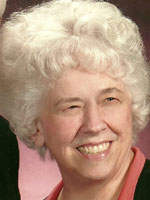 The current epithet of choice on the playground and in the classroom is fag or faggot. These words are hurled derisively at any student who is seen as “different,” whether or not the student is actually a homosexual. For the most part, this abuse is perpetrated by boys against other boys and is the result of parental and societal attitudes and pressures to be “manly.” The quiet, bookish boy who is not interested in sports is often seen as a sissy.
The current epithet of choice on the playground and in the classroom is fag or faggot. These words are hurled derisively at any student who is seen as “different,” whether or not the student is actually a homosexual. For the most part, this abuse is perpetrated by boys against other boys and is the result of parental and societal attitudes and pressures to be “manly.” The quiet, bookish boy who is not interested in sports is often seen as a sissy.
The ultimate put-down today is “You’re so gay!” and this is also used, along with “dyke,” to target girls who are assertive, intellectual, or interested in sports and masculine pursuits. Of course, not all students who have non-gender-typical behaviors and interests are destined to be homosexual, but this is considered a strong indicator. Various studies have established that 65-75% of children with non-gender-typical behavior will be gay.(1)
Detrimental Effect on Students
In spite of the old saying, “Sticks and stones may break my bones, but names will never hurt me,” words do have the power to hurt. A continued pattern of abuse may damage a student’s self-perception or make him/her feel unsafe, so that time and energy which should be devoted to learning is directed instead toward surviving in a hostile environment. If teachers do not to stop abuse, victims will feel abandoned by the very ones who should protect them. They may try to avoid calling attention to themselves by not speaking up in class or participating in class activities.
If they are actually aware of their own homosexual feelings the trauma is increased ten-fold, and often leads to missing classes or even dropping out of school permanently. The recent rash of gay teen suicides has drawn national attention to this problem, with research showing nine out of ten gay teens have experienced harassment and are four times as likely to attempt suicide as their counterparts.2 Cyber-bullying is a new form of aggression that presents a unique challenge today.
Perpetrators are also harmed if allowed to continue their attacks with impunity. Over time they tend to become more aggressive. “Studies have shown that boys identified as bullies in middle school are four times as likely as their peers to have more than one criminal conviction by age twenty-four.”(3)
Adventist Schools Different?
“But surely,” you may be saying, “this doesn’t take place in our Adventist schools!” True, most of our schools have a zero-tolerance policy for derogatory language, but this often does not extend to slurs about sexual orientation. Teachers in Adventist schools are often uncomfortable with this issue or may have strongly held beliefs regarding the sinfulness of homosexuality, and are likely to ignore, downplay, or excuse this kind of hurtful behavior.
Yet Christians believe that no one is outside God’s love. And teachers believe that every child is entitled to respect and a safe learning environment. We must recognize that gay-bashing is a separate issue from our beliefs about homosexuality.
Incidents in Adventist Schools
Mark grew up in the mission field, attending a small school that enjoyed nature activities as recreation. He was 12 when his parents came back home and settled in a small Adventist college town. He soon discovered that the other boys in his class cared only about sports. He tried to be friendly but the other students called him “Sissy.” His good grades and musical talent only intensified the ridicule and bullying, and some of the older boys even shoved him around and punched him.
One morning Mark woke up feeling completely overwhelmed with pain, sadness and rejection. He experienced a nervous breakdown and was unable to attend school or church for several weeks. Fortunately, his parents found counseling for him and he was able to finish the school year. The following year he had a teacher who refused to tolerate abusive behavior and he did better. But 45 years later, those memories are still vivid and he has spent many years in counseling, working to overcome the feelings of fear and rejection that still affect his relationships.
Peter went away to boarding academy in 11th grade, where he experienced constant ridicule and abuse from the other boys. One time they pushed him into a shower stall and urinated on him. When his horrified parents finally heard about this, they called the boys’ dean, only to be told that this was Peter’s fault for not standing up for himself, and that if the dean punished the other boys it would only make matters worse. They decided to let Peter stay home and attend high school, where he found acceptance with a number of other gay students. Unfortunately, he drifted into a promiscuous lifestyle and contracted AIDS, dying some years later. Many similar experiences could be told.
Often teachers do not know how to respond in situations like these. They may be concerned about how parents will react, uncertain about what course to follow, or dealing with their own homophobia. Here are some guidelines that may help:
Every school should have a policy that addresses anti-gay harassment, and it should be followed consistently.
Effective intervention includes immediately stopping the behavior with statements like, “Stop that right now!”, “That is not acceptable behavior”, or “Christians should not put other people down.”
This should be followed by education, either on the spot or later in private. Immediate brief instruction sets the tone for compassion and helps students know that school is a safe place. Later instruction in private has the advantage of more time for discussion, saving face for the bully, and preventing embarrassment for the victim, who may also fear retaliation after school.
Teachers, like most of us, might benefit from additional study of homosexuality in order to understand it better. A good place to start is the recently published Christianity and Homosexuality: Some Seventh-day Adventist Perspectives.(4)
Teachers should also be aware of the legal ramifications involved in situations where one student harasses another. The Equal Protection Clause of the 14th Amendment means that schools have a duty to protect lesbian, gay, bisexual, and transgender students from harassment on an equal basis with other students.(5)
Christian teachers should encourage students to value each person for his/her unique, God-given personality and talents and help develop a sense of responsible caring for each other. Then they will be ready to take their place in society as representative followers of Christ.
___________________________
(1) Healy, Melissa, “Pieces of the Puzzle” Los Angeles Times, May 21, 2001
(2) http://www.aolhealth.com/2010/10/12/gay-teen-suicide-surge/
(3) http://www.mychildsafety.net/effects-of-bullying.html
(4) http://www.sdagayperspectives.com (to purchase online)
(5) Joslin, Courtney, Esq., “Harassment and Discrimination: A Legal Overview.” National Center for Lesbian Rights, Washington, D.C., 2001
Carrol Grady is a retired minister’s wife, having served with her husband in several NAD conferences and unions as well as in Asia and the General Conference. After learning, some 20 years ago, that their youngest son is gay, she wrote a book about their family’s experiences, which led to a ministry for other families of gays and lesbians. She maintains an informational website, www.someone-to-talk-to.net.
Creating a Safe Learning Environment
By John Dolby
 Recently I was privileged to have a senior high school student share with me her dream of becoming a first or second grade teacher some day. When asked what interested her about teaching first and second grade she replied, “Because it’s the last time kids were kind to me at school. After that they just kept picking on me and teasing me.”
Recently I was privileged to have a senior high school student share with me her dream of becoming a first or second grade teacher some day. When asked what interested her about teaching first and second grade she replied, “Because it’s the last time kids were kind to me at school. After that they just kept picking on me and teasing me.”
As we continue to press into the 21st century we believe that we have become much more tolerant and respectful of others than a previous generation. After the kidnapping, beating, and murder of Matthew Shepard we think we’ve learned about inclusion and acceptance. But have we really learned anything?
The morning news tells us we still have a long way to go in treating others with respect. While we like to think that bullying and harassment happens only in “other” schools, the sad reality exists that bullying in its many forms is prevalent in Adventist schools and academies too. As I spoke with one school administrator his concern about teasing and bullying came through: “I know it exists on my campus but I don’t know how to make it stop.”
I’m reminded of Ezekiel’s stern words that were directed to the spiritual leaders of his day; words that were intended for those charged with the care of others; those who were to be like a shepherd caring for a flock. Ezekiel says, “You have not taken care of the weak ones, healed the ones that are sick, bandaged the ones that are hurt, brought back the ones that wandered off, or looked for the ones that were lost. Instead, you treated them cruelly” Ezekiel 34:4 (TEV).
Can I tell you something honestly? I really don’t like those words. Because their message isn’t just for the religious leaders in Jerusalem—those words are directed to you and me today. Too many times we’ve looked past the weak, the vulnerable, those at risk and those that have been picked on. We’ve tolerated many subtle forms of teasing and social aggression. Instead of standing up and speaking out on behalf of those who have no voice or those whose voices have been silenced, we have treated them cruelly by allowing the bullying to continue. We have neither tried to protect those who have been bullied nor have we tried to prevent it from continuing.
In her book, Creating Emotionally Safe Classrooms, Dr. Jane Bluestein suggests numerous proactive steps that educators can take to create a safe environment where everyone is treated with mutual respect, where bullying does not happen, we need to create schools where students can experience:
- A sense of belonging, of being welcomed and valued; being treated with respect and dignity; acceptance
- The freedom to not be good at a particular skill, to make mistakes, forget, or to need additional practice and still be treated respectfully and with acceptance
- Encouragement and success; recognition; instruction, guidance and resources according to individual needs
- Having one's own unique talents, skills and qualities valued, recognized and acknowledged
- Freedom from arbitrary, indiscriminate and unexpected punishment and reactivity
- Freedom from harassment, intimidation (including labeling, name-calling, ridicule, teasing, criticism, contempt, or aggression) and threat of physical harm from adults or peers
- Freedom from prejudice, judgment and discrimination based on physical characteristics and general appearance; religious, racial or cultural background; sexual orientation
- Freedom from prejudice, judgment and discrimination based on academic, athletic, creative or social capabilities; modality or learning-style preferences, or temperament,
- Freedom to have and express one's own feelings and opinions without fear of recrimination
Tragic events in recent weeks remind us that there is so much work left to do in order to make schools safe and affirming places for all students. October 5 was National Safe Schools Day—an opportunity to spread awareness of the situation of our schools and work together to change the school environments that fail to protect our youth.
John Dolby is a pseudonym
Introducing Seventh-day Adventist Kinship International
By Yolanda Elliott
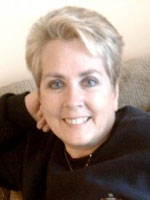 Seventh-day Adventist Kinship International provides a safe spiritual and social community to current and former Adventists who are lesbian, gay, bisexual, transgender, or intersex (LGBTI). Current membership is more than 1,500 world-wide.
Seventh-day Adventist Kinship International provides a safe spiritual and social community to current and former Adventists who are lesbian, gay, bisexual, transgender, or intersex (LGBTI). Current membership is more than 1,500 world-wide.
To help members build and nurture friendships, SDA Kinship holds an annual four-day Kampmeeting in North America as well as mini-kampmeetings around the U.S. and the world. Kampmeetings usually include worship services, group outings, and informational sessions by members or guest speakers.
Kinship also has a thriving online community through our web site, www.sdakinship.org, where members can chat with each other, post on discussion forums, read recent news stories, and share experiences that are important to them. Kinship’s education and advocacy goals are to facilitate and promote understanding and affirmation of LGBTI Adventists among themselves and within the Seventh-day Adventist community worldwide.
Since its founding in 1976, Kinship has been a lifeline to many LGBTI people, their family members, and friends. The organization encourages its members to integrate all aspects of their lives so they can live as whole and healthy LGBTI individuals—children of God awaiting the return of Jesus.
Yolanda Elliott lives in Clarksville, Maryland. She is an alumna of Columbia Union College (now WAU). She’s been a Kinship member since 1995 and is the current president of Seventh-day Adventist Kinship International.
Some Current Initiatives of SDA Kinship International
By Dave Ferguson
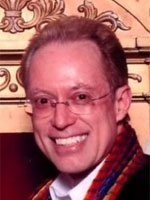 With suicides of gay teens and young adults becoming national news, SDA Kinship is working to prevent others from taking their lives. The Safe Place program has been introduced to the Presidents of the 15 Adventist universities and colleges in North America.
With suicides of gay teens and young adults becoming national news, SDA Kinship is working to prevent others from taking their lives. The Safe Place program has been introduced to the Presidents of the 15 Adventist universities and colleges in North America.
The program would provide faculty on each campus who are willing to serve as a Safe Place for gay and lesbian students to talk confidentially about their orientation. Faculty would also determine if the student needs professional counseling and if the student is facing bullying or harassment because of their sexual orientation. Other students who are perceived as “different” for cultural, ethnic, or physical reasons would also be able to talk to these faculty members. Hopefully, the program will be ready for introduction to the campuses for the 2011-2012 school year.
A similar program designed for elementary schools and academies is being developed. This anti-bullying, anti-harassment, and tolerance program should be ready for a pilot test in several schools this school year. If you would like to have your school participate in the pilot program, please contact me at churchrelations@sdakinship.org.
Your feedback regarding these initiatives is welcomed. We care what you think!
Dave Ferguson, Church Relations Director for Seventh-day Adventist Kinship International, is an active member of his local Adventist church. He served as an Adventist pastor for 15 years and tried every available method to change his orientation, but found it to be impossible. Believing that God called him to ministry, he currently ministers to Kinship members, especially others who have served the church as pastors. He also works with other pastors and educators who are seeking to provide answers to gay and lesbian members of their congregation or campus.
Discussion Questions
Besides including a representative collection of your email messages in each edition of Who Cares?, we plan to include a question for discussion. Your comments are welcomed and will be shared in the next edition, which is now scheduled for April 1. Send your thoughts and comments to editor@whocaresnewsletter.org. Here's the current discussion question:
Ellen White wrote, “Men hate the sinner, while they love the sin. Christ hates the sin, but loves the sinner. This will be the spirit of all who follow Him” (DA 462). How difficult is it to experience and communicate true love for a person while feeling hatred for what we perceive to be his sin? When does hating my brother's sin become judging him?
Designed to highlight a conversation among Adventist pastors and educators about how to deal more constructively and compassionately with our gay and lesbian constituents, Who Cares? is a quarterly e-mail publication edited by Claude E. Steen, III, editor@whocaresnewsletter.org.
| Claude E. Steen, III | Editor |
| Dave Ferguson | Church Relations, Subscriptions |
| Jacquie Hegarty | Director of Communications |
| Linda Wright | Layout & Design |


 The intersection of religion and science often swirl in a tempest. Both reflect an imperfect world searching for perfect answers. Both are at their best when provoking new thoughtful questions and are often at their worst when attempting to answer those questions.
The intersection of religion and science often swirl in a tempest. Both reflect an imperfect world searching for perfect answers. Both are at their best when provoking new thoughtful questions and are often at their worst when attempting to answer those questions.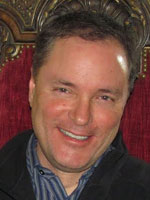
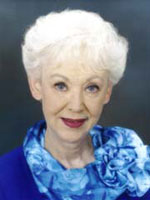 What causes a child to grow up straight versus gay or bisexual? Simon LeVay PhD addresses these types of questions in his book: Gay, Straight, and the Reason Why (NY: Oxford University Press, 2011). For those of you who are wrestling with solidifying your brain’s opinion on sexual orientation (versus, perhaps, what you have been told to hold as an opinion), LeVay’s book may assist you with obtaining additional perspective. Whether or not this prompts your brain to adopt a new opinion, knowing more about the body of knowledge in this scientific discipline can help you to discuss it in a more informed manner.
What causes a child to grow up straight versus gay or bisexual? Simon LeVay PhD addresses these types of questions in his book: Gay, Straight, and the Reason Why (NY: Oxford University Press, 2011). For those of you who are wrestling with solidifying your brain’s opinion on sexual orientation (versus, perhaps, what you have been told to hold as an opinion), LeVay’s book may assist you with obtaining additional perspective. Whether or not this prompts your brain to adopt a new opinion, knowing more about the body of knowledge in this scientific discipline can help you to discuss it in a more informed manner.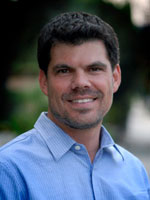 I’ll never forget the night I really talked to Matt* about his sexual orientation and what that meant for him. He was the son of one of the prominent couples in my church. Matt had come out to his parents and his church years before. But they were new in our town and at first, all we knew was that their son didn’t attend church.
I’ll never forget the night I really talked to Matt* about his sexual orientation and what that meant for him. He was the son of one of the prominent couples in my church. Matt had come out to his parents and his church years before. But they were new in our town and at first, all we knew was that their son didn’t attend church.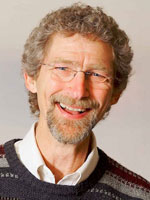 Tim Miller was tall, gaunt, impeccably dressed in a black suit. He didn’t have a British accent, but he looked like he should have. It was impossible to tell how old he was. He looked exactly the same as he had six years earlier. We were visiting at potluck after services at the Greenwich Village Church. I was fresh out of seminary, back in New York, and employed as a Bible worker at the evangelistic center in Times Square. Tim was still working in the fashion industry, still single, and still praying “that God will bring the right woman into my life.”
Tim Miller was tall, gaunt, impeccably dressed in a black suit. He didn’t have a British accent, but he looked like he should have. It was impossible to tell how old he was. He looked exactly the same as he had six years earlier. We were visiting at potluck after services at the Greenwich Village Church. I was fresh out of seminary, back in New York, and employed as a Bible worker at the evangelistic center in Times Square. Tim was still working in the fashion industry, still single, and still praying “that God will bring the right woman into my life.”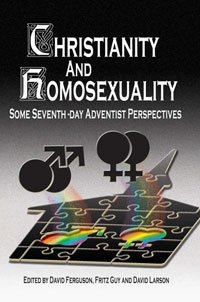 An excellent resource for a pastor or educator wishing to seriously rethink the issues of homosexuality is the 380-page book Christianity and Homosexuality: Some Seventh-day Adventist Perspectives published in 2008 by the Adventist Forum (publisher of Spectrum magazine). Don't be put off by the perception of Spectrum's liberal stance. Both liberal and conservative Adventist authors are represented in this collection of essays by behavioral scientists, medical scientists, theologians, pastors, educators and gay Adventists.
An excellent resource for a pastor or educator wishing to seriously rethink the issues of homosexuality is the 380-page book Christianity and Homosexuality: Some Seventh-day Adventist Perspectives published in 2008 by the Adventist Forum (publisher of Spectrum magazine). Don't be put off by the perception of Spectrum's liberal stance. Both liberal and conservative Adventist authors are represented in this collection of essays by behavioral scientists, medical scientists, theologians, pastors, educators and gay Adventists.
